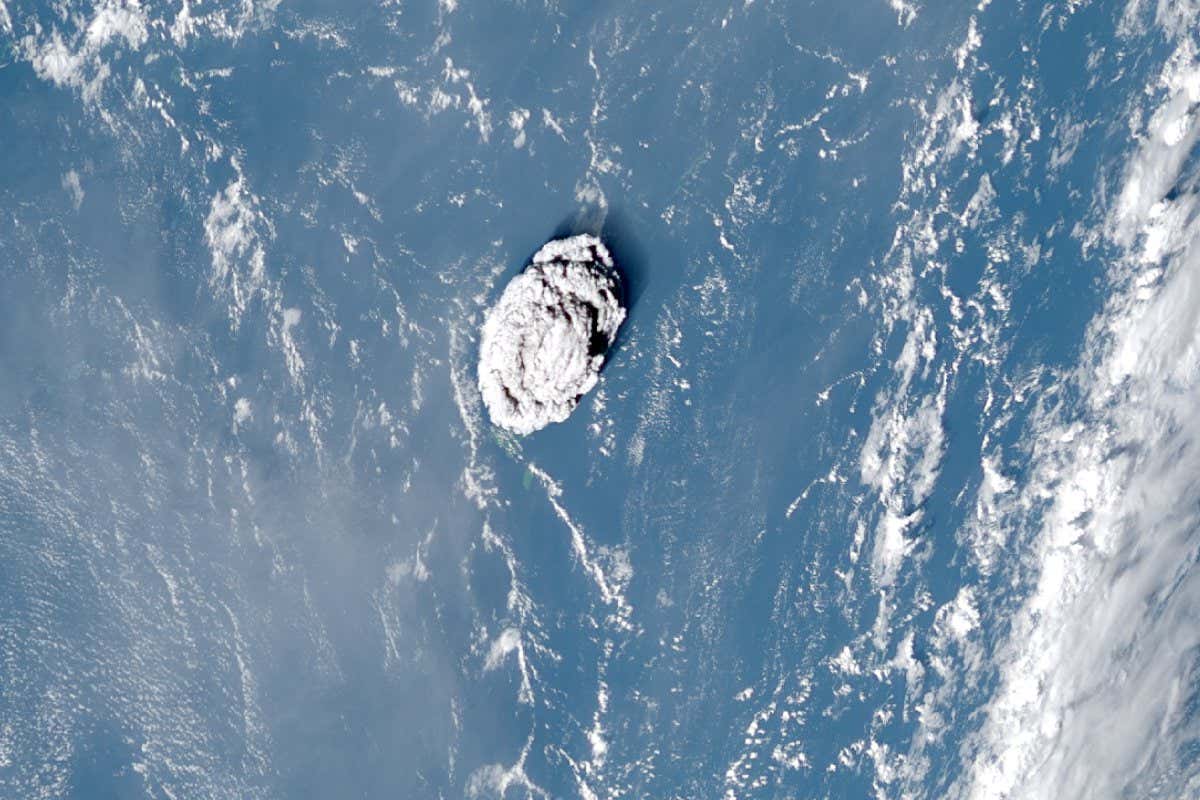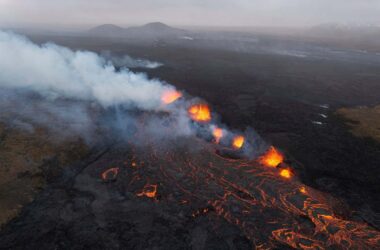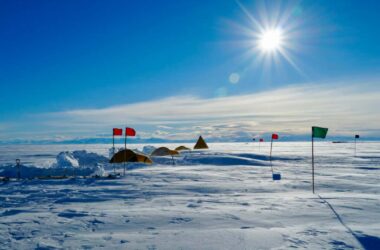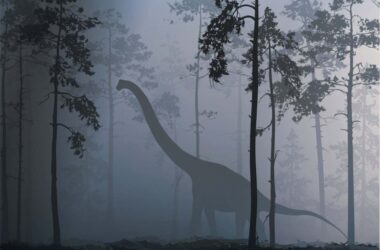Click here to watch a video of the eruption
The Hunga Tonga-Hunga Haʻapai volcano erupted in January, releasing a massive plume of ash, gases, and water. Satellite data has confirmed that this plume reached the mesosphere, making it the highest volcanic plume ever recorded. The plume reached a peak height of 57.5 kilometers and entered the mesosphere twice during the eruption. The eruption, although underwater and in a remote part of the Pacific Ocean, caused six fatalities and was heard as loud booms in New Zealand and Australia.
Simon Proud from the University of Oxford emphasizes the fortunate circumstances of the remote location of the eruption, as it could have been incredibly devastating if it had happened in a more populated area. The eruption was captured by Japan’s Himawari-8 satellite just 10 minutes after it began.
Normally, scientists calculate the height of a volcanic plume by analyzing the temperature of the volcanic cloud and the surrounding clouds. However, in this case, the plume was too high for this method to work. Instead, Proud and his colleagues used satellite data and the parallax effect, which involves measuring the shift in the location of objects when viewed from different angles, to determine the exact height of the plume.
The team’s findings confirm an analysis by NASA published in February, which estimated the eruption height to be 58 kilometers using only two satellites. Proud states that their assessment is more robust as it includes data from additional satellites. It is incredibly rare for volcanic plumes to reach the mesosphere, and this is the first confirmed occurrence. The last eruption of this magnitude was likely the Krakatoa eruption in 1883.
Proud believes that this new method of measuring volcano plume height could also be applied to assess the height and severity of storm clouds as they form.








